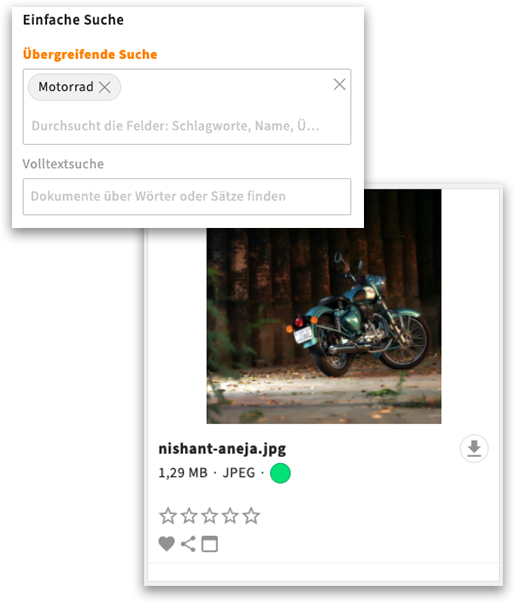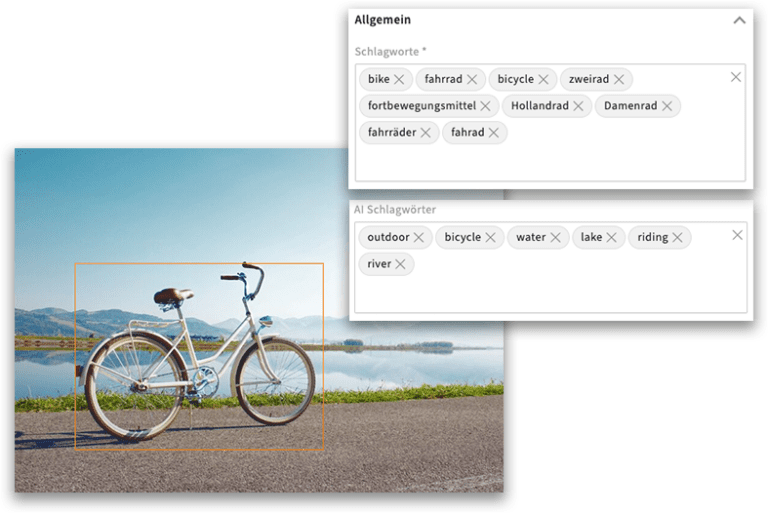news
5 min
EASIER TAGGING WITH THE THESAURUS FUNCTION
Find the right asset in your DAM through optimized search results
Table of Contents
From tagging to fast searching in DAM

A Digital Asset Management System (DAM) helps you to manage and organize assets such as images, documents, videos, etc. Users are able to find files quickly on their own.
Therefore, the software uses all metadata beyond the file name. For example, general information such as file size, format or creation date, or qualitative properties like image content, color emphasis or licenses.
Once a user imports an asset into the DAM, keywords are added to the files. The user creates descriptive keywords in a manual way. However, every user uses image content with different terms based on his or her subjective perception. This leads to inaccurate search results.
Tag files in a way that others can find them

DAM allows you to search for files even if you don’t know the file name.
During the search, the software uses different information. This includes file names or terms that are are tagged to the files. However, this only works if those are properly named and tagged. The rule is: The more specific the keywords are, the more likely it is to find the file. Still, every employee describes files in a different way. For instance, one colleague calls a bicycle “bike”, while another uses the term “bicycle”. Although both mean the same thing, different search results are displayed.
The Thesaurus feature makes comprehensive keywording easier and adds synonyms to the term. This way, assets can be found easier.
Optimal search results through a dictionary of synonyms

Use the Thesaurus function to access a dictionary with synonyms during tagging. Easily add relevant terms as well as the singular and plural forms. Brand names, common misspellings or internal terms and abbreviations can be saved in one place.
For example, the marketing employee searches for ” bicycle”, while the sales manager receives the same image with ” bike”, “bycycle” or “bicycle”, because these terms were stored as synonyms.
This increases the quality of tagging and makes the search results more accurate.
Easier search for product data with attached assets

The Thesaurus function also makes it easier to find product data with attached assets in your Product Information Management. Thanks to the advanced search, attached assets are also listed in the search results.
In addition, you have the option to create product groups. All Holland bikes and mountain bikes have the synonymous extension “bicycle” in addition to the characteristic “Holland bike” or “mountain bike”. So, you will find – regardless of their feature – all bicycles in the product group “bike”.




